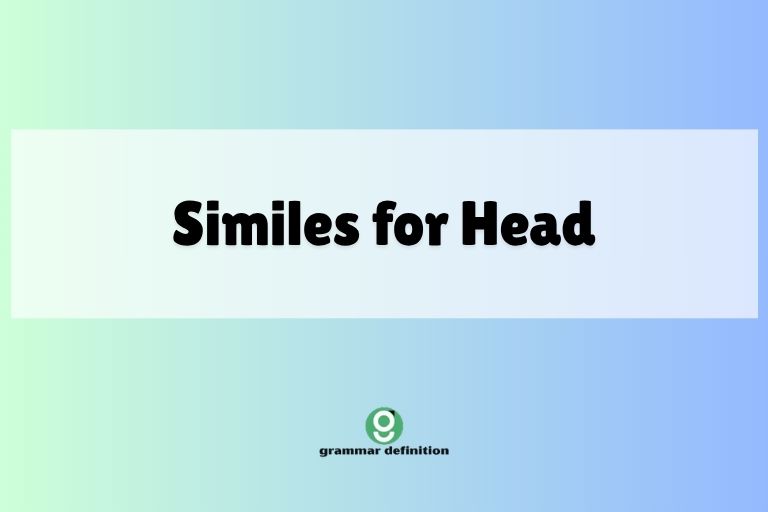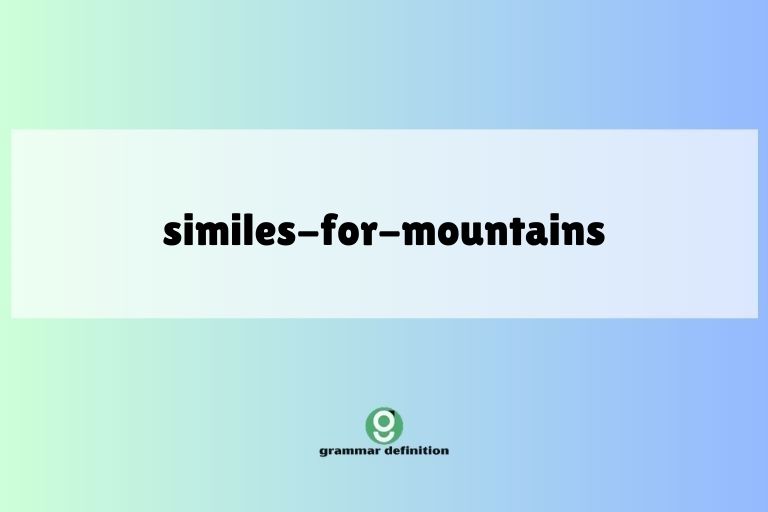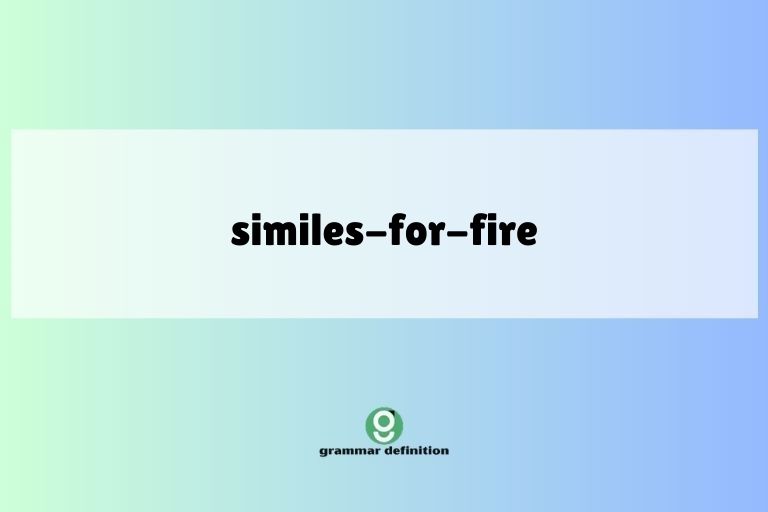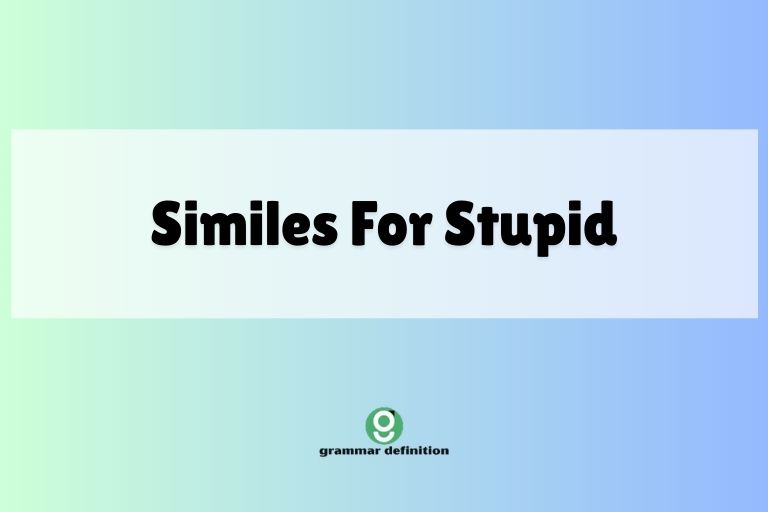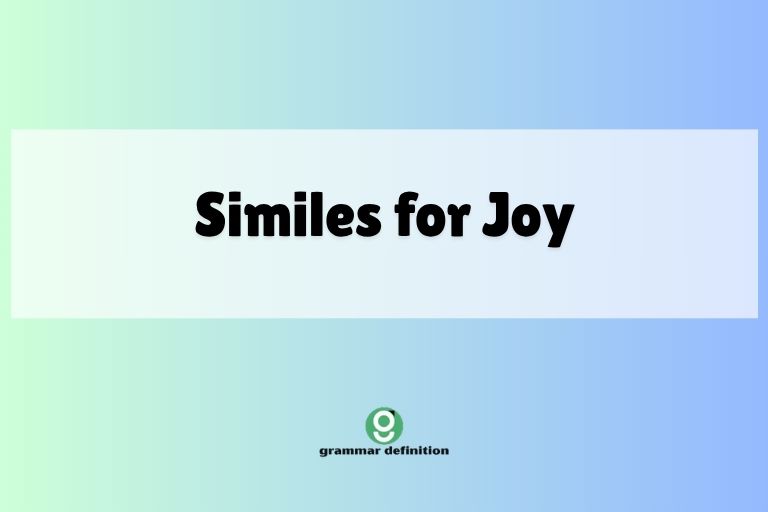Similes for Hair: A Comprehensive Guide to Figurative Language
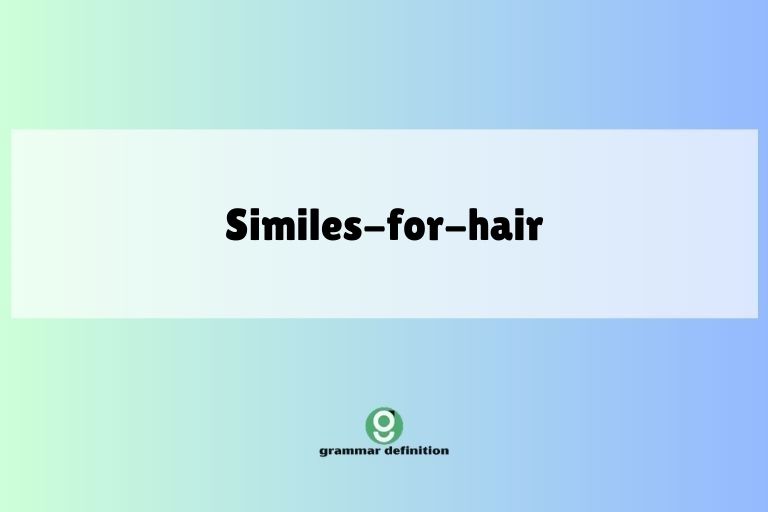
Similes are powerful tools in the English language that allow us to create vivid and engaging descriptions by comparing one thing to another using “like” or “as.” When it comes to describing hair, similes can transform a simple statement into a memorable image. Understanding how to use similes effectively can greatly enhance your writing, making it more expressive and captivating.
This article provides a comprehensive guide to using similes for hair, suitable for English language learners, writers, and anyone looking to enrich their vocabulary and descriptive skills.
Whether you’re crafting a poem, writing a novel, or simply trying to describe a friend’s new hairstyle, mastering the art of similes will add depth and color to your words. This guide covers definitions, structural breakdowns, various categories, usage rules, common mistakes, and practice exercises to help you become proficient in using similes for hair.
Get ready to unlock the creative potential of figurative language and paint a thousand words with a single simile.
Table of Contents
- Definition of Similes for Hair
- Structural Breakdown of Similes
- Types of Similes for Hair
- Examples of Similes for Hair
- Usage Rules for Similes
- Common Mistakes with Similes
- Practice Exercises
- Advanced Topics in Similes
- Frequently Asked Questions
- Conclusion
Definition of Similes for Hair
A simile is a figure of speech that compares two unlike things using the words “like” or “as.” The purpose of a simile is to create a more vivid or descriptive image in the reader’s mind. When applied to describing hair, similes can convey color, texture, style, condition, and quantity in a way that is both imaginative and precise. They are a key element of figurative language, adding depth and nuance to written and spoken communication.
Similes function by drawing a parallel between the characteristic of the hair being described and something else that shares that characteristic. This comparison helps the audience understand and visualize the hair more effectively. For instance, saying “her hair was like spun gold” is more evocative than simply stating “her hair was blonde.” The simile transforms a simple adjective into a rich, sensory experience.
The context in which a simile is used can also influence its impact. A simile used in a poem might aim for a more artistic and metaphorical effect, while a simile in a technical description might focus on accuracy and clarity.
The key is to choose comparisons that are both relevant and relatable to the audience.
Structural Breakdown of Similes
The basic structure of a simile consists of three main components: the subject (the hair being described), the linking word (“like” or “as”), and the comparative element (the thing to which the hair is being compared). Understanding this structure can help you construct effective and meaningful similes.
The standard formula for a simile is: Subject + Linking Word + Comparative Element. For example:
- Subject: Her hair
- Linking Word: like
- Comparative Element: a raven’s wing
Combined, this forms the simile: “Her hair was like a raven’s wing.” In this example, the subject is the hair, the linking word is “like,” and the comparative element is a raven’s wing, which suggests the hair is dark, glossy, and perhaps slightly mysterious.
Another example using “as”:
- Subject: His hair
- Linking Word: as
- Comparative Element: dry straw
Combined, this forms the simile: “His hair was as dry as straw.” Here, the comparison emphasizes the hair’s dryness and brittleness.
The effectiveness of a simile depends on the relationship between the subject and the comparative element. A strong simile creates a clear and understandable connection, allowing the reader to quickly grasp the intended meaning.
Choosing vivid and relatable comparative elements is crucial for creating impactful similes.
Types of Similes for Hair
Similes for hair can be categorized based on the aspect of the hair they describe. The main categories include similes for hair color, texture, style, condition, and quantity.
Each category offers a different way to enhance your descriptions and create more vivid imagery.
Similes for Hair Color
These similes describe the color of the hair by comparing it to something else that shares a similar hue. Examples include:
- Her hair was like spun gold.
- His hair was as black as midnight.
- Her hair shone like polished copper.
Similes in this category often use natural elements or precious materials to evoke specific shades and tones. The goal is to create a visual representation of the hair color that is both accurate and evocative.
Similes for Hair Texture
These similes focus on the feel and structure of the hair, describing whether it is smooth, rough, curly, straight, etc. Examples include:
- Her hair was like silk.
- His hair felt as coarse as sandpaper.
- Her curls bounced like springs.
Texture similes often rely on tactile comparisons to help the reader imagine the sensation of touching the hair. The use of contrasting textures can also create a more dynamic and engaging description.
Similes for Hair Style
These similes describe how the hair is arranged or styled, focusing on its shape, form, and overall appearance. Examples include:
- Her braids were like intricate ropes.
- His hair stood up like unruly grass.
- Her bun was as neat as a ballerina’s.
Style similes often use comparisons to familiar objects or artistic creations to convey the specific aesthetic of the hairstyle. The choice of comparative element can also reflect the personality or character of the person wearing the hairstyle.
Similes for Hair Condition
These similes describe the health and vitality of the hair, focusing on its shine, strength, and overall condition. Examples include:
- Her hair gleamed like a healthy mane.
- His hair was as brittle as dry leaves.
- Her hair was like a waterfall of health.
Condition similes often use natural elements or metaphors of strength and vitality to convey the state of the hair. These similes can also highlight the effects of neglect or damage, creating a sense of concern or sympathy.
Similes for Hair Quantity
These similes describe the amount or thickness of the hair, focusing on whether it is abundant, sparse, thick, or thin. Examples include:
- Her hair was like a thick curtain.
- His hair was as sparse as a desert landscape.
- Her hair flowed like a river.
Quantity similes often use metaphors of volume and flow to convey the abundance or scarcity of the hair. The choice of comparative element can also suggest the overall impression or impact of the hair’s quantity.
Examples of Similes for Hair
This section provides a comprehensive list of similes categorized by hair color, texture, style, condition and quantity. Each table contains a variety of examples to help you understand how to use similes effectively in your writing.
Color Similes Examples
The following table provides examples of similes that describe hair color. These similes use a variety of objects and concepts to create vivid images of different hair shades.
| Simile | Explanation |
|---|---|
| Her hair was like spun gold. | Describes very blonde hair with a shimmering quality. |
| His hair was as black as midnight. | Describes very dark, black hair. |
| Her hair shone like polished copper. | Describes reddish-brown hair with a metallic sheen. |
| His hair was like a raven’s wing. | Describes black hair with a glossy, smooth appearance. |
| Her hair was as white as fresh snow. | Describes white or very light gray hair. |
| His hair was like burnt umber. | Describes a dark brown, almost black, hair color. |
| Her hair was as golden as the sun. | Describes bright, radiant blonde hair. |
| His hair was like dark chocolate. | Describes a rich, deep brown hair color. |
| Her hair was as red as fire. | Describes vibrant red hair. |
| His hair was like silver threads. | Describes gray or silver hair with a delicate appearance. |
| Her hair was as brown as autumn leaves. | Describes a natural, earthy brown hair color. |
| His hair was like ebony wood. | Describes very dark, almost black, hair with a rich tone. |
| Her hair was as blonde as wheat in summer. | Describes a light, natural blonde hair color. |
| His hair was like dark mahogany. | Describes a reddish-brown hair color with a warm tone. |
| Her hair was as gray as storm clouds. | Describes gray hair with a somber, muted tone. |
| His hair was like coffee beans. | Describes a dark, rich brown hair color. |
| Her hair was as auburn as fallen acorns. | Describes a reddish-brown hair color, reminiscent of autumn. |
| His hair was like jet black ink. | Describes an intensely dark and shiny black hair color. |
| Her hair was as strawberry blonde as a summer sunset. | Describes a light, reddish-blonde hair color with a warm glow. |
| His hair was like bronze armor. | Describes a metallic, reddish-brown hair color with a strong sheen. |
| Her hair was as platinum as a pop star’s record. | Describes a very light, almost white blonde hair color. |
| His hair was like a chestnut’s shell. | Describes a rich, medium brown hair color. |
| Her hair was as honeyed as a bee’s treasure. | Describes a warm, golden blonde hair color. |
| His hair was like a shadow in the night. | Describes a very dark, almost imperceptible black hair color. |
Texture Similes Examples
The following table provides examples of similes that describe hair texture. These similes use comparisons to various materials and sensations to convey the feel of the hair.
| Simile | Explanation |
|---|---|
| Her hair was like silk. | Describes smooth, soft, and flowing hair. |
| His hair felt as coarse as sandpaper. | Describes rough, dry, and unpleasant hair. |
| Her curls bounced like springs. | Describes bouncy, resilient, and well-defined curls. |
| His hair was like tangled weeds. | Describes messy, unkempt, and difficult-to-manage hair. |
| Her hair was as smooth as glass. | Describes sleek, shiny, and very smooth hair. |
| His hair was like wiry steel wool. | Describes stiff, rough, and unyielding hair. |
| Her hair was as soft as a cloud. | Describes hair that is exceptionally soft and light. |
| His hair was like brittle straw. | Describes dry, easily broken, and lifeless hair. |
| Her hair was as fine as angel hair pasta. | Describes very thin and delicate hair. |
| His hair was like a steel brush. | Describes hair that is stiff, prickly, and rough to the touch. |
| Her hair was as fluffy as cotton candy. | Describes hair that is light, airy, and somewhat voluminous. |
| His hair was like a thorny bush. | Describes hair that is tangled, prickly, and difficult to manage. |
| Her hair was as slippery as eel skin. | Describes hair that is very smooth and difficult to grip. |
| His hair was like dried seaweed. | Describes hair that is brittle, tangled, and lacking moisture. |
| Her hair was as bouncy as a trampoline. | Describes hair that is full of life and easily springs back into shape. |
| His hair was like a thicket of thorns. | Describes hair that is dense, tangled, and difficult to comb. |
| Her hair was as sleek as a seal’s coat. | Describes hair that is smooth, shiny, and lies flat against the head. |
| His hair was like a rusty nail. | Describes hair that is rough, brittle, and appears damaged. |
| Her hair was as light as a feather. | Describes hair that is fine, delicate, and almost weightless. |
| His hair was like tightly coiled springs. | Describes hair with very tight, defined curls. |
| Her hair was as fluid as liquid mercury. | Describes hair that flows smoothly and has a metallic sheen. |
| His hair was like a horse’s rough mane. | Describes hair that is thick, coarse, and somewhat unruly. |
| Her hair was as delicate as spider silk. | Describes hair that is extremely fine, fragile, and easily broken. |
Style Similes Examples
The following table provides examples of similes that describe hair style. These similes use comparisons to various objects and concepts to convey the appearance of the hair.
| Simile | Explanation |
|---|---|
| Her braids were like intricate ropes. | Describes carefully woven braids with a complex pattern. |
| His hair stood up like unruly grass. | Describes hair that is messy, sticking up in various directions. |
| Her bun was as neat as a ballerina’s. | Describes a perfectly formed and tidy bun. |
| His dreadlocks hung like thick vines. | Describes long, heavy dreadlocks with a natural, organic appearance. |
| Her ponytail swung like a pendulum. | Describes a ponytail that moves rhythmically from side to side. |
| His hair was styled like a rock star’s. | Describes a bold, edgy, and attention-grabbing hairstyle. |
| Her curls cascaded like a waterfall. | Describes long, flowing curls that resemble a cascade of water. |
| His hair was sculpted like a work of art. | Describes a hairstyle that is meticulously crafted and visually striking. |
| Her bangs were as straight as a ruler. | Describes perfectly straight and evenly cut bangs. |
| His sideburns were like Elvis’s. | Describes long, prominent sideburns in the style of Elvis Presley. |
| Her updo was as elegant as a swan’s neck. | Describes an updo that is graceful, refined, and sophisticated. |
| His hair was spiked like a punk rocker’s. | Describes a hairstyle with sharp, upright spikes. |
| Her waves flowed like ocean currents. | Describes soft, natural waves that resemble the movement of the ocean. |
| His hair was combed back like a 1950s idol. | Describes a classic, slicked-back hairstyle reminiscent of the 1950s. |
| Her chignon was as intricate as lacework. | Describes a detailed and delicate chignon hairstyle. |
| His hair was tousled like a surfer’s. | Describes a relaxed, slightly messy hairstyle typical of surfers. |
| Her pigtails bounced like playful puppies. | Describes pigtails that are lively and full of energy. |
| His fade was as sharp as a razor’s edge. | Describes a haircut with a very precise and clean fade. |
| Her French twist was as classic as a vintage movie. | Describes a timeless and sophisticated French twist hairstyle. |
| His hair was slicked back like a vintage car’s finish. | Describes hair that is neatly styled and shiny, reminiscent of vintage cars. |
| Her twists were as artful as a sculptor’s creation. | Describes meticulously crafted and visually striking hair twists. |
| His afro was as round as a globe. | Describes a full, circular afro hairstyle. |
| Her cornrows were as uniform as a city grid. | Describes neatly and uniformly braided cornrows. |
Condition Similes Examples
The following table provides examples of similes that describe the condition of hair. These similes use comparisons to various objects and concepts to convey the health and vitality of the hair.
| Simile | Explanation |
|---|---|
| Her hair gleamed like a healthy mane. | Describes hair that is shiny, strong, and full of life. |
| His hair was as brittle as dry leaves. | Describes hair that is fragile, easily broken, and lacking moisture. |
| Her hair was like a waterfall of health. | Describes hair that is vibrant, flowing, and in excellent condition. |
| His hair was as dull as tarnished silver. | Describes hair that lacks shine and appears lifeless. |
| Her hair shone like a polished gemstone. | Describes hair that is exceptionally shiny and healthy. |
| His hair was like scorched earth. | Describes hair that is damaged, dry, and lacking vitality. |
| Her hair was as resilient as bamboo. | Describes hair that is strong, flexible, and resistant to damage. |
| His hair was like a neglected garden. | Describes hair that is unkempt, unhealthy, and lacking care. |
| Her hair was as radiant as sunshine. | Describes hair that is bright, vibrant, and full of life. |
| His hair was like faded parchment. | Describes hair that is dry, brittle, and lacking color. |
| Her hair thrived like a well-watered plant. | Describes hair that is nourished and growing healthily. |
| His hair was as lifeless as dust. | Describes hair that is dull, brittle, and completely lacking vitality. |
| Her hair was like a river of silk. | Describes hair that is smooth, flowing, and exceptionally healthy. |
| His hair was as damaged as a cracked vase. | Describes hair that is severely damaged and broken. |
| Her hair was as vibrant as a blooming flower. | Describes hair that is full of life and radiant with health. |
| His hair was like a field of dry hay. | Describes hair that is dry, brittle, and lacks moisture. |
| Her hair was as strong as woven steel. | Describes hair that is incredibly resilient and resistant to breakage. |
| His hair was like a shadow of its former self. | Describes hair that has lost its health and vitality. |
| Her hair was as lustrous as pearls. | Describes hair that is shiny, smooth, and reflects light beautifully. |
| His hair was like a wasteland of split ends. | Describes hair that is riddled with split ends and in poor condition. |
| Her hair was as nourished as a baby’s skin. | Describes hair that is incredibly soft, healthy, and well-cared for. |
| His hair was like a broken promise. | Describes hair that has failed to maintain its health and beauty. |
| Her hair was as full of life as a rainforest canopy. | Describes hair that is abundant, vibrant, and full of health. |
| His hair was like the aftermath of a fire. | Describes hair that is severely damaged, burnt, and lacking vitality. |
Quantity Similes Examples
The following table provides examples of similes that describe the quantity of hair. These similes use comparisons to various objects and concepts to convey the abundance or sparseness of the hair.
| Simile | Explanation |
|---|---|
| Her hair was like a thick curtain. | Describes hair that is dense, heavy, and covers a large area. |
| His hair was as sparse as a desert landscape. | Describes hair that is thin, scattered, and lacking density. |
| Her hair flowed like a river. | Describes hair that is long, abundant, and moves freely. |
| His hair was as thin as cobwebs. | Describes hair that is very fine, delicate, and lacking volume. |
| Her hair was like a voluminous cloud. | Describes hair that is full, fluffy, and expansive. |
| His hair was as patchy as a worn rug. | Describes hair that is uneven, with bald spots or thin areas. |
| Her hair was as abundant as a wheat field. | Describes hair that is plentiful and covers a wide area. |
| His hair was like a scattering of seeds. | Describes hair that is very sparse and thinly distributed. |
| Her hair was like a dense jungle. | Describes hair that is thick, tangled, and difficult to manage. |
| His hair was as bare as a plucked chicken. | Describes hair that is almost completely absent. |
| Her hair was like a cascade of silk. | Describes hair that is long, flowing, and abundant. |
| His hair was as fine as down feathers. | Describes hair that is very thin, soft, and lacking volume. |
| Her hair was as thick as a lion’s mane. | Describes hair that is incredibly dense and voluminous. |
| His hair was like a whisper of strands. | Describes hair that is barely present and very thin. |
| Her hair was like a flood of curls. | Describes hair that is abundant and full of curls. |
| His hair was as scant as morning dew. | Describes hair that is minimal and barely noticeable. |
| Her hair was like a tidal wave of tresses. | Describes hair that is overwhelming in its abundance and volume. |
| His hair was as sparse as stars in daylight. | Describes hair that is thinly scattered and barely visible. |
| Her hair was like a blanket of locks. | Describes hair that is thick, dense, and covers a large area. |
| His hair was like a memory fading away. | Describes hair that is thinning and disappearing over time. |
| Her hair was as full as a summer harvest. | Describes hair that is abundant, healthy, and thriving. |
| His hair was like a wisp of smoke. | Describes hair that is fine, delicate, and almost imperceptible. |
| Her hair was as expansive as the night sky. | Describes hair that is voluminous and covers a large area. |
| His hair was like the last leaves of autumn. | Describes hair that is thinning and nearing the end of its life. |
Usage Rules for Similes
Using similes effectively involves following certain rules to ensure clarity and impact. The primary rule is to choose comparisons that are both relevant and understandable to your audience.
A simile should enhance understanding, not confuse the reader.
1. Relevance: The comparative element should have a clear and logical connection to the subject being described. For example, comparing hair to “sandpaper” to describe its texture is relevant because both share a rough quality.
2. Clarity: The comparison should be easy to understand. Avoid obscure or overly complex references that might not be familiar to your audience. For instance, comparing hair to a “fractal pattern” might be confusing for those unfamiliar with fractals.
3. Originality: While familiar similes can be effective, try to create original comparisons that offer a fresh perspective. Overused similes like “as smooth as silk” can become clichés and lose their impact. Instead, consider “as smooth as liquid glass” for a more unique image.
4. Context: Consider the context in which the simile is used. A simile in a formal essay might require a more precise and objective comparison, while a simile in a poem might allow for more creative and metaphorical comparisons.
5. Avoid Mixed Metaphors: Ensure that the simile does not create a mixed metaphor, which can be confusing and illogical. For example, “Her hair was like a waterfall flowing uphill” creates a contradictory image.
Common Mistakes with Similes
Several common mistakes can weaken the effectiveness of similes. Recognizing and avoiding these errors will help you use similes more skillfully.
1. Clichés: Overusing familiar similes like “as smooth as silk” or “as black as night” can make your writing sound unoriginal and predictable. Try to find fresh and unique comparisons.
2. Illogical Comparisons: Choosing comparative elements that don’t logically connect to the subject can confuse the reader. For example, “Her hair was like a refrigerator” doesn’t create a clear or meaningful comparison.
3. Overly Complex Similes: Using overly complex or obscure references can alienate your audience. Keep your comparisons simple and easy to understand.
4. Mixed Metaphors: Combining incompatible metaphors within a single simile can create a confusing and illogical image. For example, “His hair was like a tangled forest floating on a sea of oil” mixes unrelated concepts.
5. Incorrect Use of “Like” and “As”: Using “like” and “as” interchangeably when they have slightly different connotations can weaken the simile. “Like” implies similarity, while “as” implies equivalence or degree. Consider the nuance of each word when constructing your simile.
Here are some examples of common mistakes and their corrections:
| Incorrect Simile | Corrected Simile | Explanation |
|---|---|---|
| Her hair was as black as night. | Her hair was as black as obsidian. | Avoids the cliché “as black as night” with a more specific comparison. |
| His hair was like a computer. | His hair was like a tangled mess of wires. | Creates a more logical comparison related to the hair’s appearance. |
| Her hair was as smooth as a hyperspace jump. | Her hair was as smooth as polished marble. | Replaces an obscure reference with a more universally understood comparison. |
| His hair was like a stormy sea of sunshine. | His hair was like a tangled, sun-bleached rope. | Corrects the mixed metaphor by creating a coherent image. |
Practice Exercises
Test your understanding of similes with these practice exercises. Identify the type of simile used (color, texture, style, condition, quantity) and rewrite the sentences to improve the simile’s effectiveness.
Exercise 1: Identify the type of simile and improve it.
| Question | Answer |
|---|---|
| 1. Her hair was like straw. | Type: Texture. Improved: Her hair was as brittle as dried straw. |
| 2. His hair was as black as coal. | Type: Color. Improved: His hair was as black as the depths of space. |
| 3. Her hair was like a mess. | Type: Style. Improved: Her hair was styled like a whirlwind had passed through it. |
| 4. His hair was as thin as anything. | Type: Quantity. Improved: His hair was as sparse as blades of grass in winter. |
| 5. Her hair was like healthy. | Type: Condition. Improved: Her hair shone like a beacon of health. |
| 6. His hair was like spaghetti. | Type: Texture. Improved: His limp hair hung like strands of overcooked spaghetti. |
| 7. Her hair was as red as a rose. | Type: Color. Improved: Her hair was as red as molten lava. |
| 8. His hair was like a bird’s nest. | Type: Style. Improved: His hair was tangled like a disheveled bird’s nest. |
| 9. Her hair was as thick as something. | Type: Quantity. Improved: Her hair was as thick as a forest undergrowth. |

